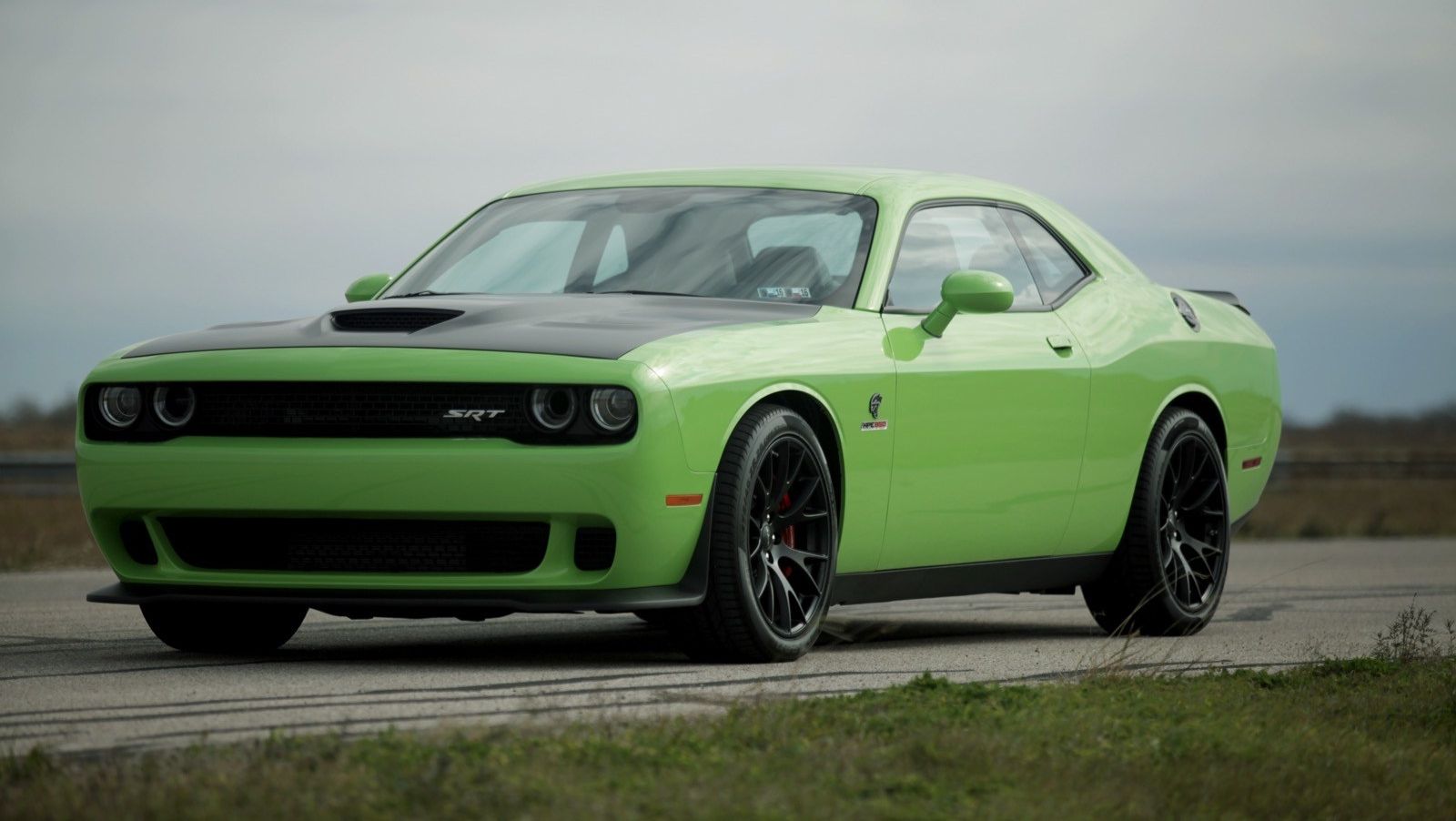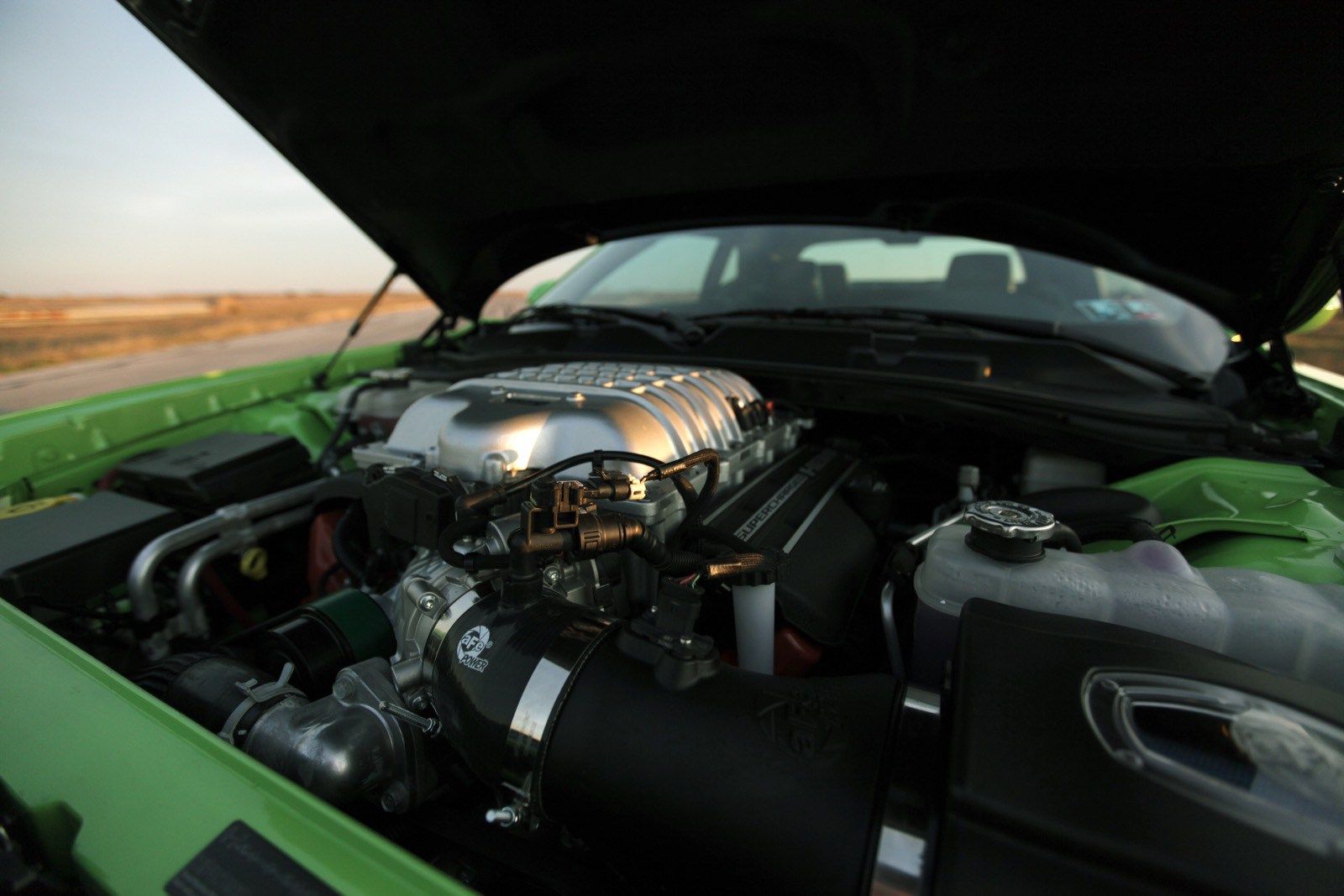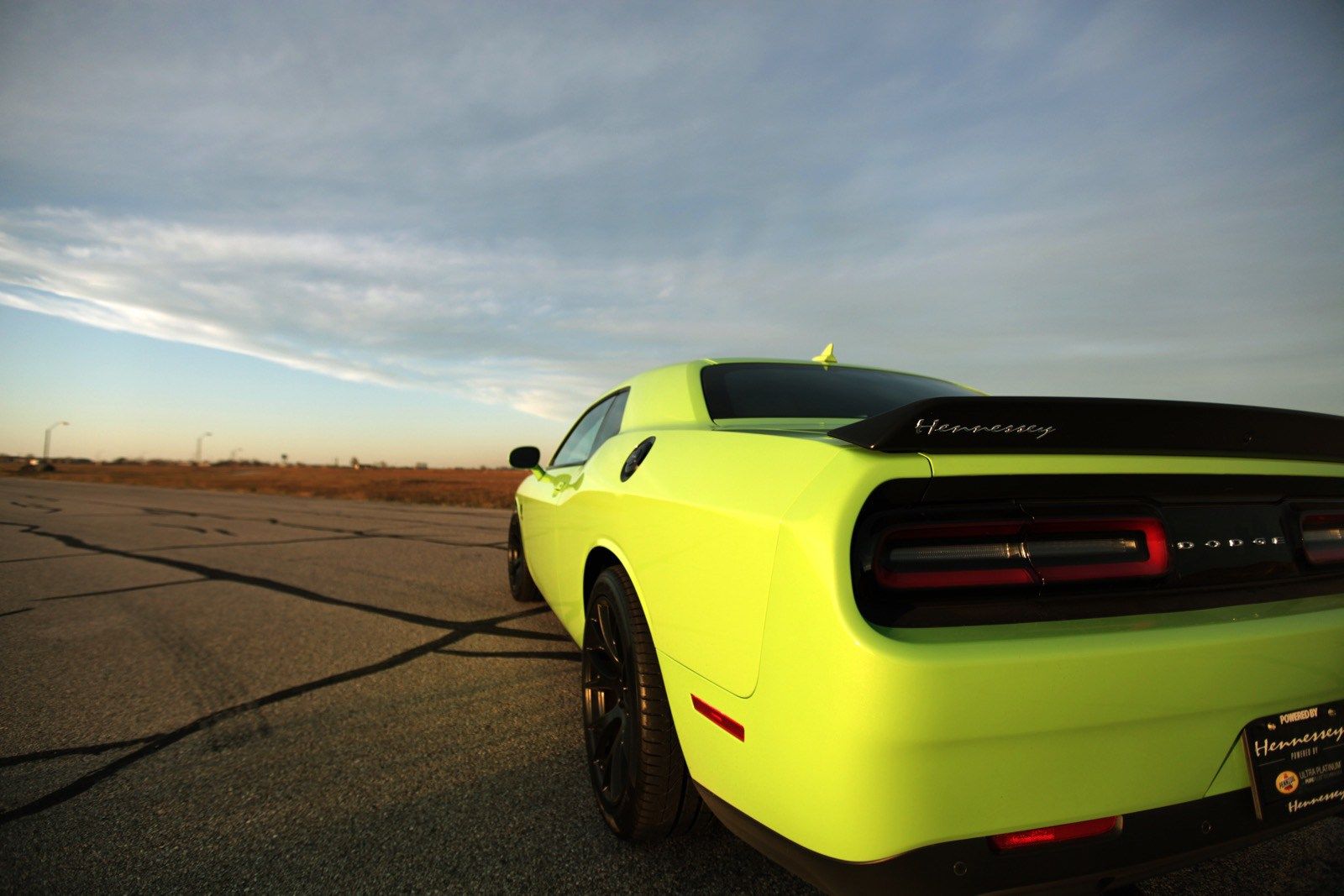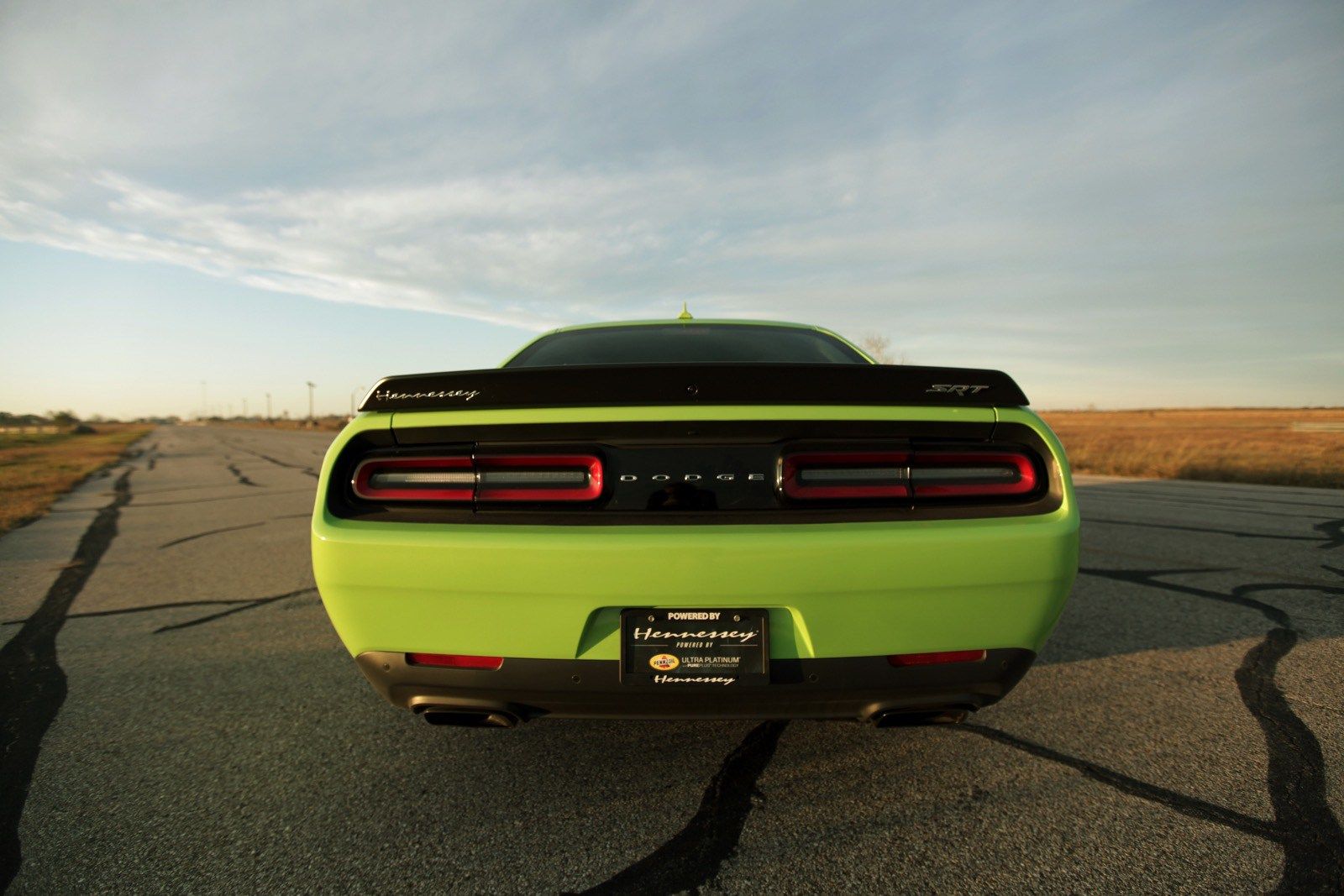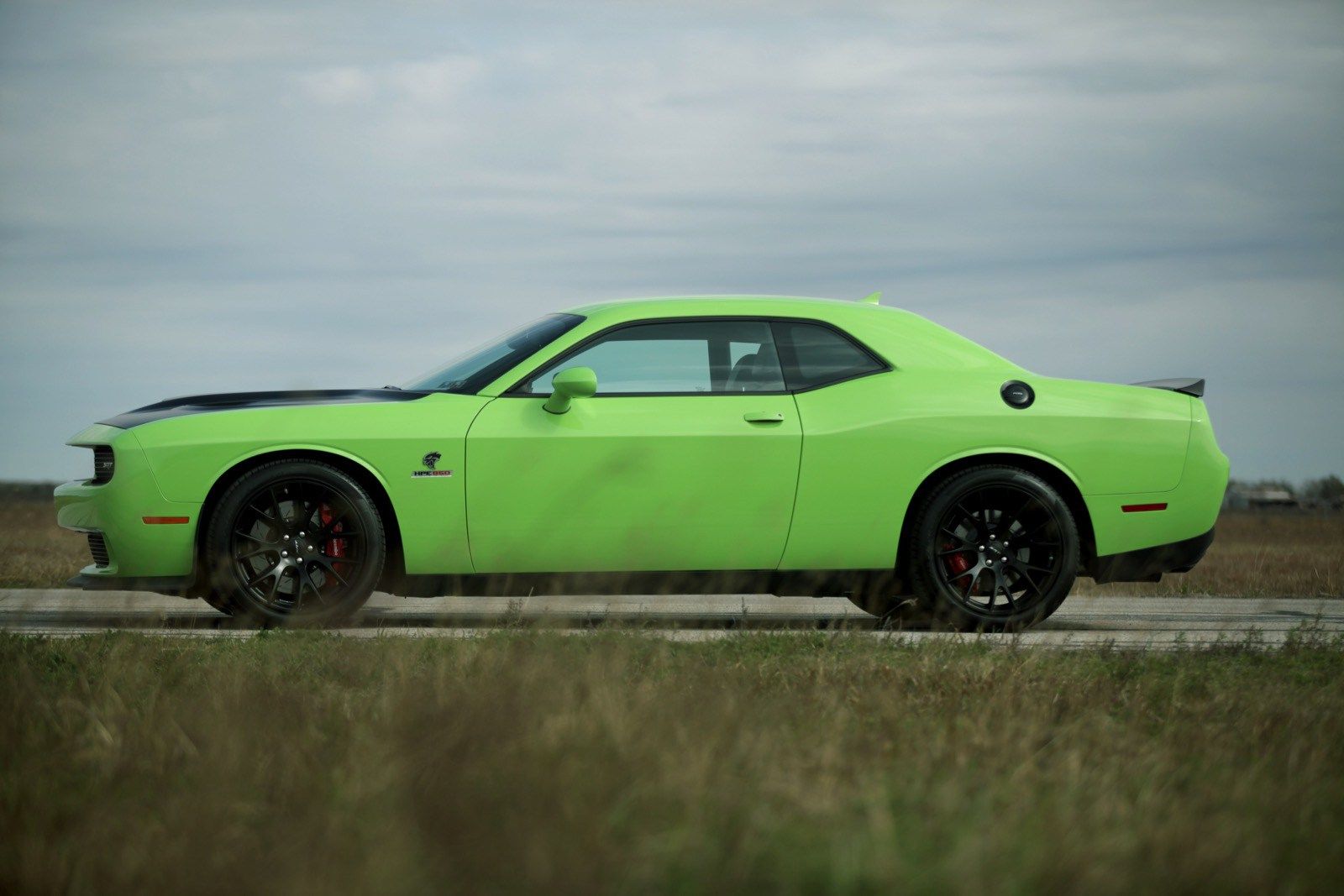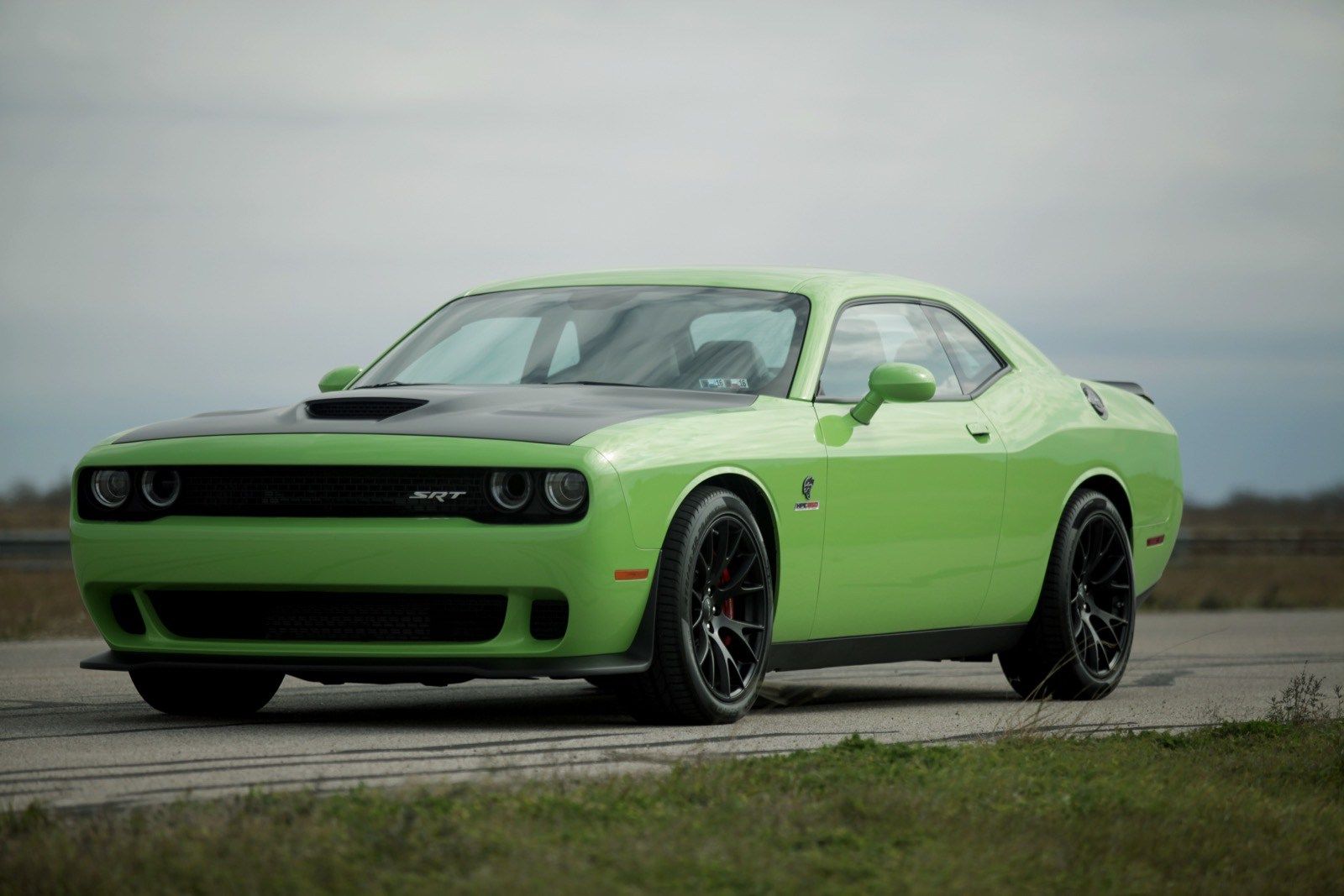The Chevrolet Camaro->ke248 and the Ford Mustang->ke428 may get all the muscle car headlines, but anybody who knows their ponies know that this is a three-car battle. It seems a little strange to say that the Dodge Challenger->ke249 is the most understated of the three, but the Dodge->ke28 muscle car->ke507 has proven to be as capable as its Chevy->ke199 and Ford->ke31 counterparts. Hennessey->ke1863 definitely knows what’s up, and that is why it has programs for all three muscle cars. This one, though, is about the Challenger, specifically the Challenger SRT Hellcat version, considered as the most powerful Challenger ever.
So what happens when you take the “most powerful Challenger ever” and hand it over to Hennessey? Magic happens, that’s what. The tuner’s new program for the Dodge muscle car pushes past all of the cosmetic upgrades and focuses solely on making the Challenger’s supercharged, 6.2-liter, V-8 mill more powerful. That might sound excessive for some people considering that the muscle car already has 707 horsepower at its disposal. But, last I checked, the word “excessive” is completely foreign to the same company that gave us the Venom GT.->ke4149 There’s no such thing as excess to Hennessey!
Needless to say, the Challenger Hellcat received a series of performance modifications, each offering different output levels depending on what a customer can handle. There’s an HPE800 kit, an HPE850, and for those who really want their Challengers to fly, an HPE1000 program. I know what might interest a majority of Challenger owners, but in the interest of full disclosure, that HPE1000 kit is really something else. Ever wanted to feel what it’s like to cover a quarter-mile in under 10 seconds?
The answer: HPE1000.
Continue after the jump to read the full review.
2016 Dodge Challenger SRT Hellcat By Hennessey
- Make: Array
- Model: 2016 Dodge Challenger SRT Hellcat By Hennessey
- [do not use] Vehicle Model: Array
Exterior
The exterior was left in standard configuration so don’t anticipate any modifications that’ll change the way the Challenger Hellcat looks. There are some Hennessey badges placed on the car. These badges count as the only exterior modifications, which isn’t that bad considering that Hennessey’s badge is now prominently displayed in the rear while the “Powered by Hennessey” badges can be seen in the side and rear of the muscle car. At least people will know why the Challenger Hellcat has so much power under its hood.
Interior
I suppose it’s only right that Hennessey’s interior upgrades are also limited to embroidered headrests, premium floor mats, and a Hennessey serial numbered plaque that’s been signed by John Hennessey himself. If that doesn’t signify the exclusivity of this program, I don’t know what will. Other than these additions, the cabin of the Challenger Hellcat remains the way it was when it left the production facility.
Drivetrain
Hennessy has never been known for being a world-class cosmetic tuner. It made its bread with performance modifications and this one is no different. The Challenger Hellcat has three separate modification stages, beginning with the HPE800. It’s by far the simplest engine tune with the only notable additions being a high-flow air filter, a new ECU, an upgraded tuning software, and a lower pulley upgrade that increases boost by 1-2 psi. The result of these modifications is an extra 98 horsepower, bringing the total output from the Challenger Hellcat’s 6.2-liter, supercharged V-8 engine to 805 horsepower.
The next level engine upgrade is the HPE850. This one comes with the same new and improved components as the HPE800 program. The only difference is that Hennessey used the tuning software to bring the muscle car’s output to a fiercer 852 horsepower. As impressive as the HPE800 and HPE850 kits are, neither compare to the coup de grâce of the entire program for the Challenger Hellcat.
This is where the HPE1000 comes into the picture and, as far as upgrades go, this one is as extensive as it gets. For instance, Hennessey installed a pair of ball-bearing turbochargers running at 15 psi to work in collaboration with the stock supercharger already found in the car’s power-packed V-8. A new high-flow air to water intercooler system was also installed, as well as a stainless steel turbo headers and downpipes, upgraded high-flow fuel injectors, and a tuned ECU. All these additions helped bring the muscle car’s output to an estimated 1,032 horsepower and 987 pound-feet of torque. According to Hennessey, those numbers help the car sprint from 0 to 60 mph in just 2.7 seconds to go with a quarter-mile time of just 9.9 seconds at 142 mph. No mention was made on a new top speed, but with these changes in tow, the Challenger Hellcat should have no problem exceeding 200 mph.
Pricing
Hennessey doesn’t typically release pricing details of its programs, opting instead to have prospective customers reach out to discuss the details on price and turnaround time. The SOP for this program will be the same. It should be noted that those who do end up buying a program will receive a free lifetime membership in the official Hennessey Vehicle Registry and a one year / 12,000-mile limited warranty on their tuning kits.
Competition
Chevrolet Camaro SS by Hennessey
Modifications on muscle cars are usually reserved to a few tuning firms and Hennessey is arguably one of the most prominent of this bunch. So, I’m going to start here because the aftermarket company actually just released its own program for the new Chevrolet Camaro SS. You might wonder why I’m not using the Camaro Z/28 since that’s a more apt competitor for the Challenger Hellcat. I actually considered it, but I ended up with the Camaro SS because it’s a newer model and it’s got a total of eight (eight!) different upgrades from Hennessey, including a similar HPE1000 kit that counts as the biggest upgrade on the Camaro.
I’m only going to spare a few words on the exterior and interior upgrades because there’s really nothing different between the two programs. There are the badges, plaques, floor mats, and not much else. It’s the engine upgrades that really make the difference between the two. I’m a fan of the kits being offered for the Challenger Hellcat, but I have to give this to the Camaro because of the aforementioned fact that it has eight different programs. There are three naturally aspirated programs beginning with the HPE500 and going all the way up to HP650. From there, Hennessey turns to its supercharger upgrades, starting with a separate version of the HPE650 and all the way up to the HPE1000 kit.
It’s not often that quantity takes precedence over quality, especially when it comes to tuning upgrades. But, I think this is a notable exception considering that it comes from the same tuning firm. The fact that Hennessey offers more options for the Camaro SS than the Challenger Hellcat compels me to give the nod to the Chevy muscle car.
Read our full review here.
Ford Shelby GT350 by Hennessey
In a pretty predictable move by my own admission, I’m completing this holy trinity of muscle cars by adding Hennessey’s own program for the Shelby GT350 Mustang. Now this comes with a caveat because right now, the tuner only has two kits available for the Shelby ‘Stang - an HPE575 natural aspirated upgrade and an HPE800 supercharged program.
Neither will come close to matching what Hennessey has to offer with either the Challenger Hellcat or the Camaro SS, but I wouldn’t be surprised if the American tuner is preparing new and more powerful variations in the future. I’d keep a strong eye on that, but for now, the Mustang program is a clear third place in this three-kit ranking with the Camaro SS and the Challenger Hellcat battling for supremacy.
That’s not to say that the HPE800 kit is pointless because with 808 horsepower and 657 pound-feet of torque, the Mustang Shelby GT350 can still do some serious damage to the tune of a 0-to-60 mph sprint time of 3.3 seconds and a quarter-mile time of 10.8 seconds at 133 mph.
Read our full review here.
Conclusion
This is one of those cases where an already powerful car gets the attention of a tuner that doesn’t mind building kits of excess. That’s probably the best way to describe Hennessey’s programs. You really don’t need them, but with promises of power reaching four digit figures, you become compelled to experience what that must feel like. Personally, I’m not as big of a fan of the Challenger Hellcat as I am of its Camaro or Mustang counterparts. That’s just my preference. But, I can’t deny that these programs are impressive, especially the HPE1000 kit that essentially drops the Challenger’s quarter-mile time below the 10-second mark. That’s performance spelled with a capital “P”.

